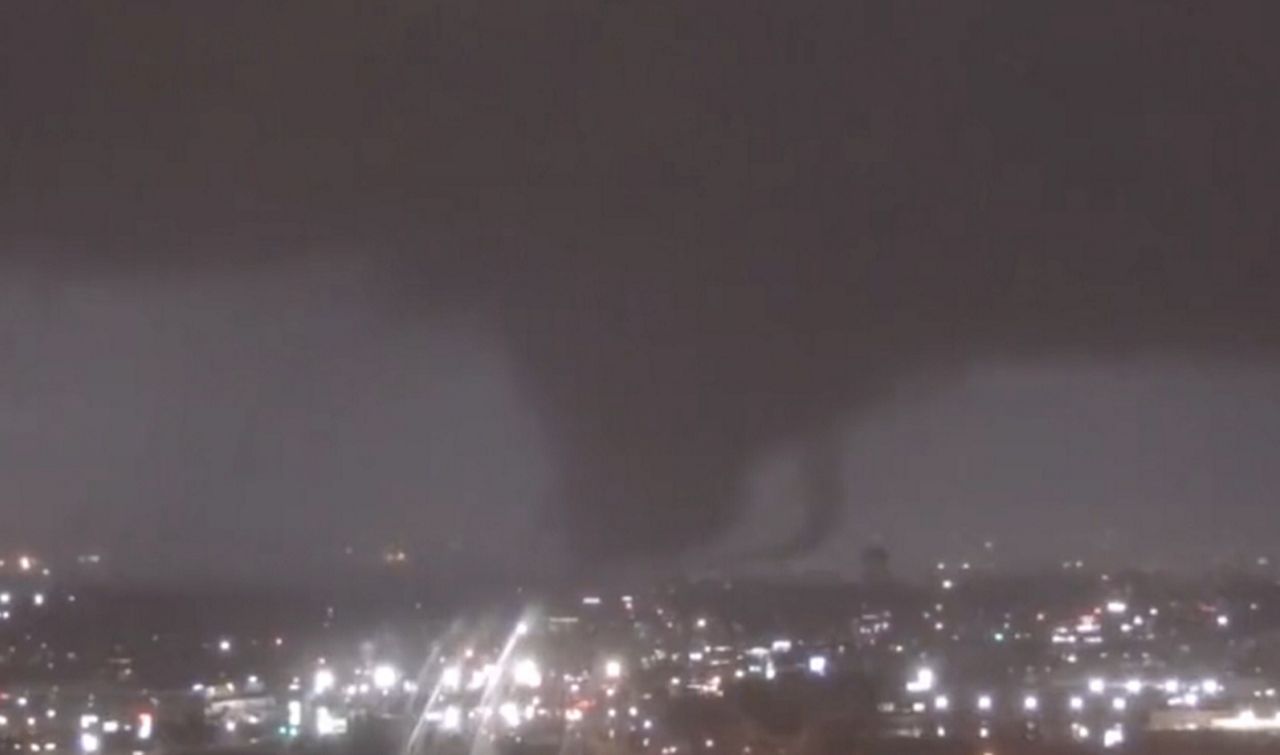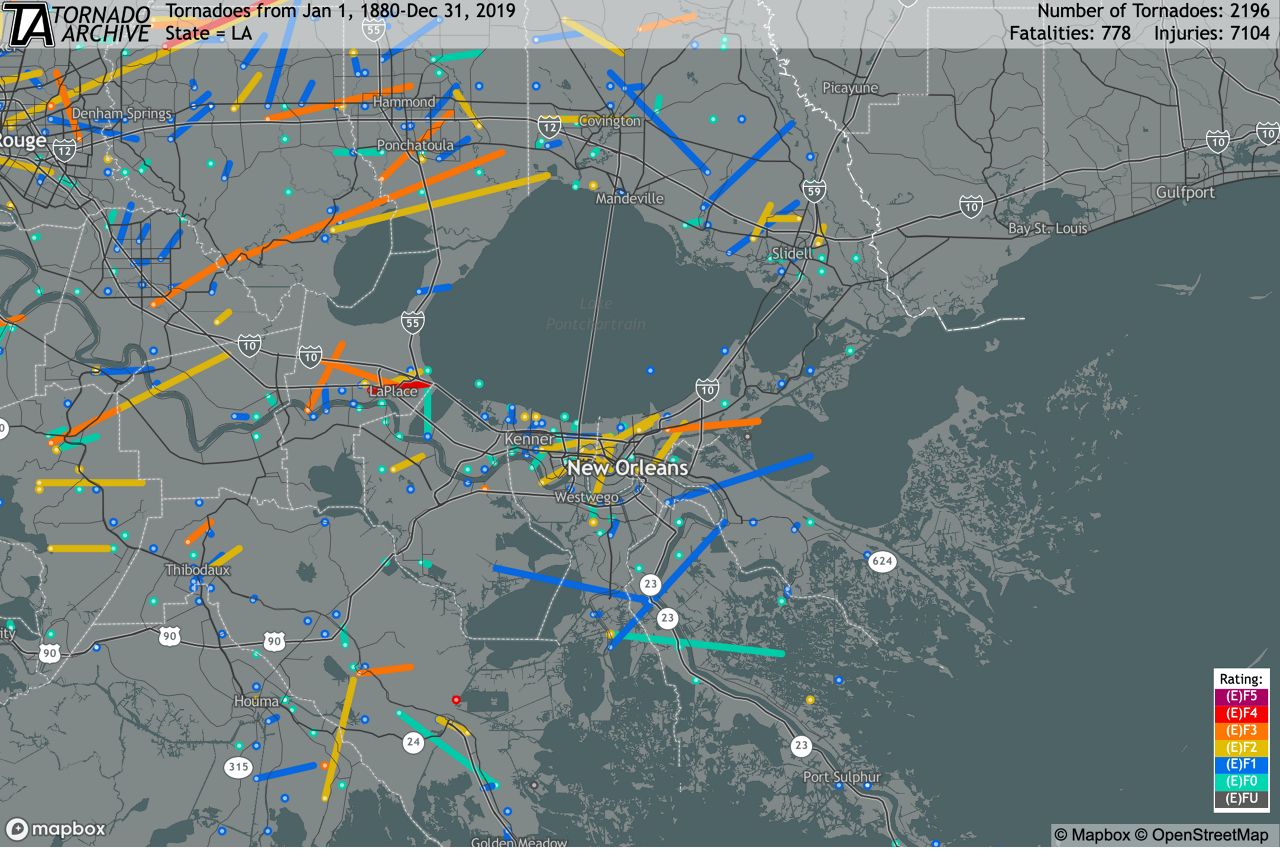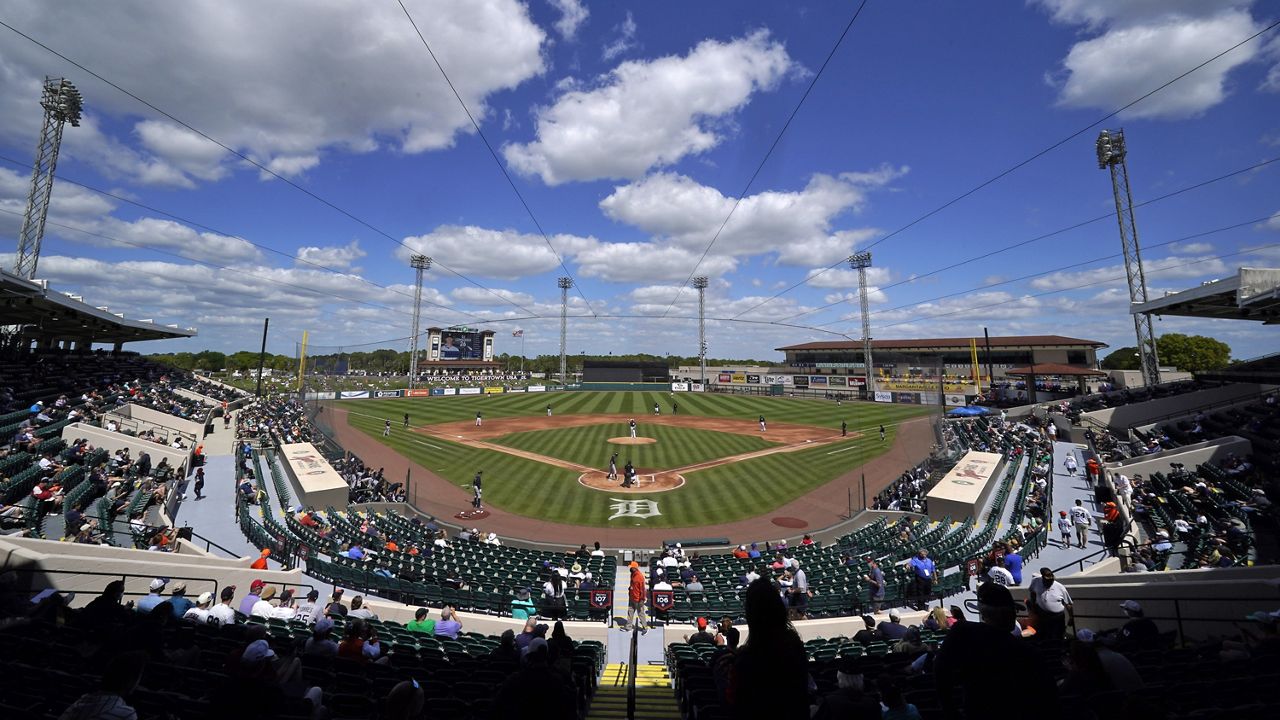ARABI, La. — A tornado tore through parts of New Orleans and its suburbs Tuesday night, flipping cars and ripping roofs off homes and killing at least one person in a region that was pummeled by Hurricane Katrina 17 years ago.
Parts of St. Bernard Parish, which borders New Orleans to the southeast, appeared to take the brunt of the weather's fury, and that is where the fatality occurred. St. Bernard Parish officials gave no details on how the person died; they said multiple other people were injured.
Rescue workers were searching through the suburban parish for more people in need of assistance, according to Sheriff Jimmy Pohlmann. St. Bernard Parish President Guy McInnis said the tornado caused widespread damage throughout the parish.
In New Orleans, video taken by a local television station Tuesday showed a large black funnel visible in the darkened sky looming among the buildings in the eastern part of the city.

You can watch a clip in the video player at the top of this page. It appears to be a "multiple-vortex tornado," in which the main tornado has at least one smaller tornado swirling as part of it. While these tornadoes are smaller, they are still intense and can cause very localized paths of significant damage.
The tornado appeared to start in a New Orleans suburb and then move east across the Mississippi River into the Lower 9th Ward of New Orleans and parts of St. Bernard Parish — both of which were badly damaged by Katrina — before moving northeast.
Reggie Ford was nearby in Arabia when the tornado struck. He drove from the area, only to return once it passed, to help anyone who needed it. He said the streets were eerily quite, only filled with fresh devastation from the twister.
“I see downed powerlines. A church is completely destroyed. Three businesses are completely destroyed. There are eight blocks of houses missing their roofs,” the New Orleans resident said. Video he posted on Instagram shows debris cluttered streets and shredded buildings. A battered car was flipped on its roof.
Near the community of Lacombe in St. Tammany Parish, one tornado snapped trees and also caused shed damage. The National Weather Service rated that tornado as an EF-1. Crews continue to survey damage elsewhere on Wednesday.
In the New Orleans suburb of Arabi, there was a strong smell of natural gas in the air as residents and rescue personnel stood in the street and surveyed the damage. Some houses were destroyed while pieces of debris hung from electrical wires and trees. An aluminum fishing boat in front of one house was bent into the shape of a C with the motor across the street. Power poles were down and leaning over, forcing emergency workers to walk slowly through darkened neighborhoods checking for damage.
Michelle Malasovich lives in Arabi. Initially she had been worried about family that lives in areas north of Louisiana that were also getting hit by bad weather. She was texting with her family there when, she said, “All of a sudden the lights started flickering.”
Her husband was out on the porch and saw the tornado coming.
“It just kept getting louder and louder,” Malasovich said. After it passed they came out to survey the damage. “Our neighbor’s house is in the middle of the street right now.”
Malasovich’s house fared relatively well, she said. Some columns were blown off the porch and the windows of her Jeep were blown out. Down the street a house was severely damaged, and parked vehicles had been moved around by the winds: “This is serious for down here.”
New Orleans Mayor LaToya Cantrell tweeted late Tuesday that there were no reports of casualties or significant damage to the city and that the power utility was working to restore electricity to the 8,000 customers impacted.
About 13,000 homes and businesses were reportedly without power in the three parishes around New Orleans after the storm.
While people in the metropolitan region are used to dealing with severe weather such as hurricanes or heavy rains, it’s rare that a tornado moves through the city. A 2017 tornado caused widespread damage when it touched down in the eastern part of the city.

Ahead of the severe weather, many schools closed early or cancelled after-school activities Tuesday in parts of Louisiana and Mississippi to allow students to get home before the weather deteriorated. Shelters opened for residents who needed a place to stay while the storms traveled through.
Louisiana’s federal and state authorities reminded thousands of hurricane survivors living in government-provided mobile homes and recreational vehicle trailers to have an evacuation plan because the structures might not withstand the expected weather. More than 8,000 households live in such temporary quarters, officials said.
After leaving the New Orleans area, the system dumped heavy rain, downed trees and prompted multiple Tornado Warnings as it moved into Alabama Tuesday evening. The roofs of several homes were damaged in Toxey, Alabama, after a storm preceded by Tornado Warnings passed through the area, the National Weather Service tweeted.









